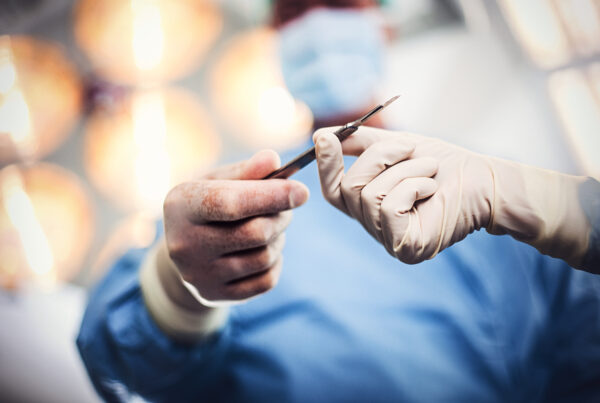Thigh lifting is one of the most delicate procedures: when is liposuction indicated and when is it preferable?
Dr Cappellina Cesare, a plastic surgeon from Vicenza, explains why.

Dr Diego and Cesare Cappellina are both plastic surgeons They visit in Vicenza
Together with the arms, the thigh region is among the first to suffer from changes in skin tone. The surgical indication must therefore be as selective as possible. When a patient comes to our office it is important to analyze the situation of the thighs: in fact there are three situations in which we find ourselves facing.
The 3 main problems consist of:
- Adiposity without sagging of the skin
- Flaccidity of the skin without adiposity
- Both.

Thigh lift is the procedure that allows to improve the medial upper part of the thigh. It may be associated to liposuction.
The treatment depends on the indications we put in front of the different cases and are characterized by:
- Liposuction
- Thigh lift
- Both
1) Adiposity without flaccidity:
In this case, liposuction is the only viable option, as it can be performed in one or two operating times depending on the volume, skin turgor and age of the patient. The demarcation of the patient is made with the patient standing. The surgery is performed under general anesthesia, with the patient supine. The retraction capacity of the skin in this region is limited: the most important thing is how much fat to leave rather than how much to remove. After the surgery, compression bandages are kept for a few days, while an elastic sheath is recommended for about 4 weeks
2) Flaccidity without adiposity:
Only the thigh lift remains indicated: the area to be resected is limited by the line that runs along the inguinal fold, up to about 2/3 cm above, to a line halfway between the anterior superior iliac spine and the vulva. This line can be more or less elongated posteriorly, depending on the amount of skin to be removed. The portion of skin removed has the shape of an ellipse. 3/5 points are applied in the muscular aponeurosis of the thigh and at the level of the Colles fascia. In less demanding patients, the surgery is performed only in the supine position, and the scar falls as mentioned at the level of the inguinal fold. However, if the patient is more demanding, it is necessary to extend the scar at the level of the medial portion of the thigh.
A mini thigh lift is used to reduce relaxation in the upper part of the inner thigh. instead of tightening the entire thigh, only the small portion of the upper third of the thigh is worked. It is used for patients who do not have a particularly high amount of excess fat or skin, but just want to reduce the area.
To perform this surgery, a small incision is made in the groin area. This will be used to perform liposuction, after which excess skin will be removed. Thigh lift surgery results in a smaller, smoother appearance, with minimal bumps and dents. Since this is the most minimal type of thigh cosmetic surgery available, recovery time is minimized. The procedure only takes about two hours to complete, and patients can generally start light exercise within two weeks.
After the incisions are made, a large amount of skin and fat is removed. This may or may not involve liposuction, depending on the patient’s wishes.
Next, the thigh is lifted by sewing the skin in a higher and tighter position than before. The thigh lift scar will be located in the groin crease, resulting in a thin appearance. Alongside the mini thigh lift, this is the most discreet type of thigh prosthesis available. Scars are minimized, but excellent results can still be achieved.
Vertical thigh lift
A vertical thigh lift is used for patients who have excess skin that extends all the way around the thigh. While an inner thigh lift focuses on the upper area, this type of thigh lift also treats the middle and lower sections of the thigh. Since this procedure treats a larger area of the body, it requires a larger incision. Instead of a small incision, an ellipse-shaped area of the skin is cut and removed. This area starts from the inner upper part of the thigh and extends to the inner knee area. Due to the shape of this incision, this surgery is also sometimes referred to as a “crescent lift”. In this case, more significant and noticeable scars are left. While the scars from an inner thigh lift will be kept hidden under most underwear, these scars are more noticeable. These scars will not be visible when the legs are closed. However, when they are open and the inner thigh is exposed, large T-shaped scars may be seen. Since this procedure is more extensive, it is only recommended for patients who have large amounts of excess skin to remove. We must inform the patient of the resulting scars: in our experience, in fact, while the Brazilian patients accept the scars in a calm and conscious way, the Italian patients are initially reluctant to have visible scars.
For this reason, the moment of the consultation is of fundamental importance, in order to show some results (not only those that have come out at their best), to describe the possible local complications, in order to then manage them together, making the patient an active and aware part. The moment of convalescence, in fact, with the maturation of the scar, especially in this type of surgery, is essential, as much as surgery, in order not to perform violent abduction movements of the thighs, a possible cause of cicatricial diastasis.
Flaccidity with adiposity
In this case of combined thigh lifting, lipoaspiration is performed first, aimed at reshaping and reducing the swelling of excess skin, and then the thigh lifting is performed: unless exaggerated cases we tend to perform this combined intervention, i.e. at the same time, starting with liposuction and then with thigh lifting. In this way we reduce the patient’s discomfort of having to undergo two surgeries. However, in selected cases, where the accumulation of fat is considerable, we propose the intervention in two steps. In conclusion, the upper-internal area of the thighs is a particular area to be treated, given the anatomical and structural characteristics. It is important to be very selective in the surgical indications for thigh lifting and to evaluate the pros and cons well, in order not to live with the patients’ exaggerated expectations and results that do not correspond to the desired.



